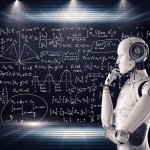By Andrew Bourne
Customer experience (CX) has always been a crucial differentiator for businesses, but in 2020, it became a matter of survival. As businesses around the world were forced to shut their physical shops and placed under immense economic pressure, only those who could leverage technology to pivot and realign their strategies were able to survive, and in some cases, thrive.
Customer expectations have also shifted at an unprecedented rate. Even with hopes of a successful vaccine on the horizon, as businesses return to their usual brick-and-mortar stores, a few changes are here to stay. Here, we look at some of the trends that have shaped customer experience in 2020, and what we can expect in the coming years:
1. Contact-less customer experience
Businesses have had to pivot to a no-touch model for the delivery of goods and services. Contact-less experiences are here to stay, and this is now evident in customer preferences.
For example, as many as 73% of customers would prefer a self-checkout option at supermarkets.
There has also been an increase in the use of digital signature software. Moreover, people may avoid busy shopping centres altogether.
The rapid growth of e-commerce in developing markets further supports this. In Kenya, COVID-19 has brought about several major e-commerce innovations. This trend will likely continue even after the pandemic ends because of the sheer agility this model offers, among other benefits like speed.
2. Self-service in B2B
Self-service has long played a key role in influencing Business to Consumer (B2C) customers, but the tables are turning and the B2B segment is quickly adopting self-service interaction models too.
This is true for both online and offline areas. The main drivers of this trend are faster service speed and sheer flexibility. As a result, knowledge bases, FAQ sections, search functionality, and community forums are becoming as common in the B2B space as they are in the consumer arena.
These tools provide the hands-off support that allows customers to get answers quickly and feel empowered.
3. Consistent customer experience from anywhere
Most teams around the world have been pushed out of their comfort zones, having to work remotely. On the plus side, this has allowed teams to remain connected while also eliminating many barriers which seemed insurmountable a year ago.
For example, crucial business meetings would need people to gather physically, especially in the B2B space. Even with training or onboarding, in-person experiences were always considered the real deal.
Businesses now want to equip themselves to not just solve problems from anywhere but, to provide superior customer experiences, irrespective of where they’re being delivered from.
For example, call centres became virtual, rather than requiring hundreds of people to be in a room together. Businesses have also ramped up their digital offerings, right up to wine farms offering remote tasting experiences.
4. Customer retention
Even in economically good times, it’s more expensive to acquire new customers than to retain existing ones. As the global economy crashed, customer retention became a top priority for many businesses which had to rely on their most loyal customers to stay afloat.
With marketing budgets slashed, even new customer acquisitions are focused on fostering long-term loyalty. As a result, we saw an even greater focus on areas like account management and loyalty programs.
5. Value consciousness
Irrespective of size, most businesses have been forced to cut costs. The same is true of households.
It will take a long time for both to return to pre-pandemic expenditure levels. Value, therefore, now plays an increasingly important role in customer experience. It’s important for companies to provide competitively priced products or services that deliver immense value and maximise on providing efficient personable service of an exemplary standard.
As a result, businesses are focusing on operational efficiency and process optimization that can help business expenditure reduction, which can then be passed on to the customers in the aftermath of the pandemic.
Embracing uncertainty in a rapidly changing marketplace
That such major shifts took place in 2020 shows just how uncertain the business environment has become. Rather than railing against that and hoping for a return to normal, businesses should embrace this uncertainty as it allows for innovation in effective service delivery and brand building.
See Also>>>> MultiChoice Kenya Unveils 2020 Festive Campaigns
The Writer is The Region Manager, Africa, Zoho Corporation













Leave a comment